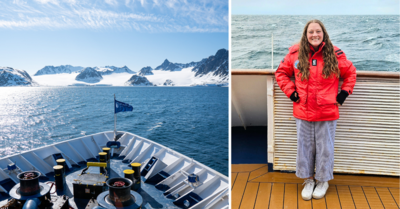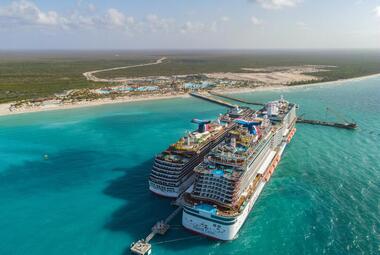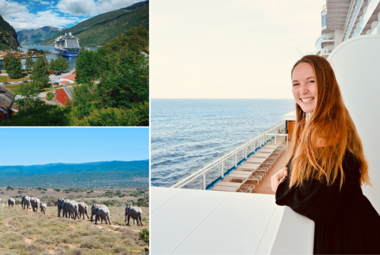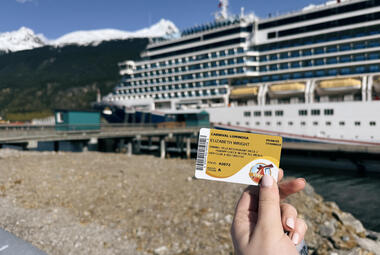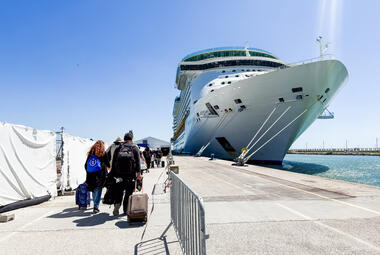Sometimes traveling is all about the journey.
After cruising over twenty times, I have sailed through seas around the world, from Australia’s Coral Sea to Spain’s Bay of Biscay. Some seas, like the Mediterranean, tend to be quite calm, especially in the most protected waterways like the Adriatic. Other seas typically encounter rougher conditions. The Gulf of Alaska, for instance, is often choppy due to strong winds and currents.
Of all the Earth's seas and waterways, however, there are two that are among the most treacherous: the North Sea and the Drake Passage. Yet some of the world's most breathtaking destinations—Antarctica, Greenland, Iceland, and Svalbard—lay alongside these seas.
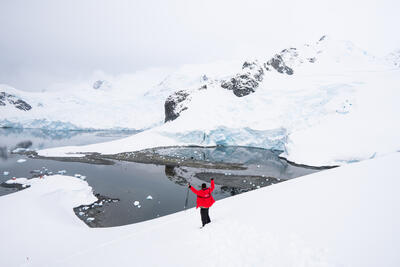
As a cruise writer, it was only a matter of time before I booked an itinerary that traversed these threatening waters. In the past year, I booked two polar cruises, cruising through the North Sea and the Drake Passage.
I feared no bodies of water on Earth like these two. Both times, as my ship left the safety of port, I was nervous for the inevitable journey that lay ahead.
Here’s what it was like cruising through two of the world's most dangerous seas, and my take on whether or not they are really as bad as they say.
Related: The 9 Roughest Seas In The World For Cruise Ships
The Drake Passage and the North Sea are unpredictable, with some of the world’s most threatening sea conditions
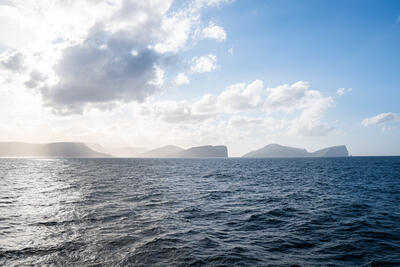
Even though any body of water is subject to the occasional storm, the Drake Passage and the North Sea are well known for their unpredictability.
The Drake Passage is located between the southernmost tip of South America—Cape Horn—and Antarctica’s South Shetland Islands. The body of water has been feared by sailors for centuries, causing an estimated 800 shipwrecks and 20,000 lives lost.
What makes the Drake Passage so dangerous is its location. The passage is in a region of the Southern Ocean with no landmass at its latitude. This means storms can circulate around the globe uninterrupted, building intense strength and speed along the way.
At the other pole, the North Sea is prone to unpredictability, too. The majority of the sea is under 300 feet in depth, which causes friction between the water and the sea floor, leading to choppy waves. The shallow depth, combined with foggy conditions, freezing temperatures, and frequent icebergs, has earned the sea a fearsome reputation.
Luckily, modern technology and vessels have improved safety for passengers
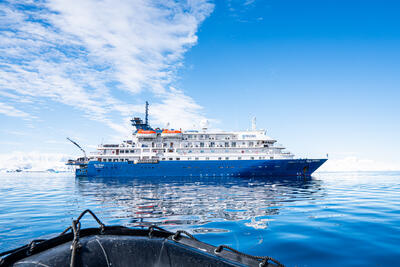
Don’t be so quick to swear off Antarctic and Arctic cruises forever—it’s not necessarily as bad as people say.
Today’s polar cruises, after all, are a far cry from the earliest polar expeditions. Whereas cruising to Antarctica in the 1800s was rampant with scurvy, loneliness, and unexpected storms, today’s passengers are highly unlikely to encounter any of these issues, especially scurvy!
Modern ships have state-of-the-art navigation systems, weather forecasting equipment, and stabilizers for rough seas. The stabilizers emerge laterally from the ship’s hull to reduce roll, which helps to increase passenger comfort onboard.
Of course, even the latest technology cannot change Mother Nature. There's always a chance your itinerary could encounter a storm, itinerary change, or missed port of call. The ultimate goal of a cruise line, after all, is to keep passengers safe, and ships will not sail through dangerous conditions if they can be avoided.
Related: I took a cruise on a ship with 107 versus 7000 passengers
On a cruise to Antarctica, I sailed through the Drake Passage twice
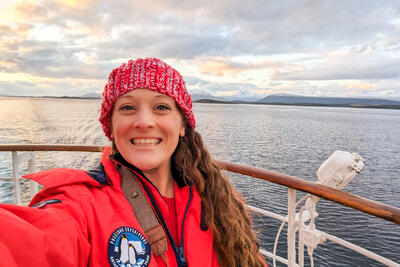
As a seasoned globetrotter, there was one destination above all others on my bucket list—Antarctica. The penguins were calling, yet to get there, I knew I had one hurdle in front of me: the Drake Passage.
Having researched Antarctica cruises for years, I knew cruising to the continent was a gamble. Lucky passengers encounter what is known as the Drake Lake—a calm, uneventful crossing. Those less fortunate face the Drake Shake, a term used to describe the sea’s intimidating, nausea-inducing waters.
Nonetheless, I decided the adventure was worth the risk, and I set sail toward Antarctica from Ushuaia, Argentina. The journey to Antarctica usually takes two days in each direction, although the exact travel time depends on the weather conditions at hand.
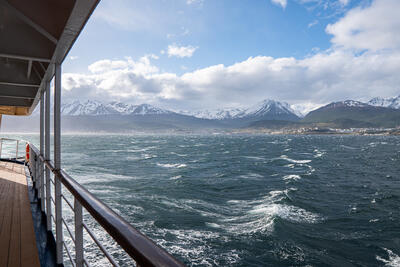
Leaving South America’s protected Beagle Channel behind and entering the Drake Passage, I braced myself for the worst.
As we ventured south, however, the winds appeared to be in our favor. Not only did we encounter sunny skies and calm wave conditions, but we arrived over twelve hours earlier than expected, giving us extra time to explore Antarctica.
Sure, I felt some movement onboard—inevitable on a small expedition ship—but it was nothing a seasickness patch couldn’t fix.
Related: How to avoid cruise motion sickness
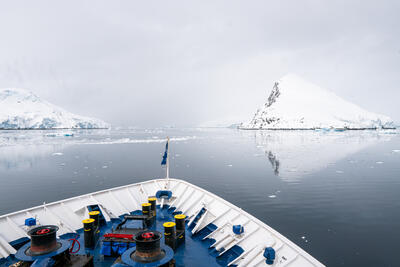
The next five days in Antarctica were equally calm. Despite the Drake Passage’s risky conditions, waters around the Antarctica peninsula are well-protected by islands blocking strong currents.
When it was time to wave goodbye to Antarctica, I, once again, braced myself for the worst on our return to South America. Yet the return saw even better conditions, with our captain joking that he felt like he was navigating the Mediterranean!
After an uneventful crossing of the Drake Passage, I booked an Arctic cruise traversing through the North Sea
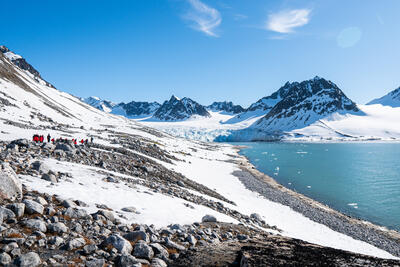
Trading penguins for polar bears, I booked an Arctic cruise from Edinburgh to Svalbard earlier this summer. It’s easy to fall in love with Earth’s polar regions, and after my unforgettable cruise to Antarctica, I was itching to explore further north.
Looking at a map of the itinerary, I realized I would have to cross the North Sea to reach Svalbard, a Norwegian Archipelago far above the Arctic Circle. Upon this realization, I felt slightly anxious. Would my luck continue after my smooth crossing of the Drake Passage, or had it run out?
Last fall, fellow Cruise.Blog writers Hayley and Allie cruised through the North Sea on a British Isles itinerary, and they encountered waves up to 18 feet. A massive storm caused the pair to encounter what Hayley said were the roughest seas she had ever experienced.
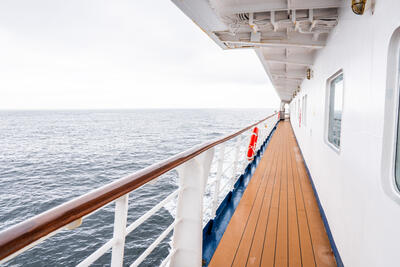
After their experience, I was already leery of the North Sea. To make matters worse, videos of the North Sea’s frightening conditions were trending on TikTok earlier this spring, with videos of massive storms amassing millions of views on the platform.
Like with Antarctica, I figured the destination was worth the risk of rough seas. I boarded my expedition vessel in Edinburgh feeling confident about the journey north.
Unfortunately, my luck ran out—I encountered high seas and missed ports
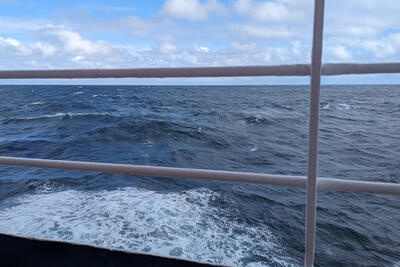
On the first night of my Arctic cruise, I was woken up by a large crash of a wave against the ship. I felt as if I were riding a roller coaster, and while I didn’t feel seasick, I had trouble sleeping with the ship’s movement.
Despite the rough seas, our ship docked at our first port of call in Scotland’s Orkney Islands without any issues, but we later missed two ports due to wind conditions.
In order to land at the Shetland Islands and Jan Mayen Island, we were required to board small zodiac boats to go ashore. With waves as high as 6 feet, operating the zodiacs would have been too dangerous.
Expedition cruises always expect the unexpected, and thankfully, our itinerary was able to change course and head to Svalbard a day earlier.

This would give us an entire extra day in the archipelago, although traveling the far distance required three sea days.
I was nervous to spend three days in a row on the North Sea, but it wasn’t as bad as I thought. The ship wasn’t still by any means, but I wore a seasickness patch as a precaution and tried to spend as much time as possible in the fresh air.
If anything, crossing the North Sea was an adventure. A pod of orcas swam alongside us on one of the sea days, and the ship even hosted an Arctic Circle party which kept spirits high.
Upon arrival in Svalbard, we were welcomed by glaciers, polar bears, reindeer, and mammoth vistas in every direction. From my first glance at Svalbard, I knew that the North Sea crossing, despite my qualms, was undeniably worth it.
Are the world’s most dangerous seas as bad as people say?

After cruising through the Drake Passage and the North Sea, I consider myself relatively lucky with the conditions I encountered.
There are dozens of Drake Passage horror stories on the internet, from reports of rogue waves hitting ships to passengers stuck sick in bed for days.
Nature is never predictable, and whether the Drake Passage will be "as bad as people say” all depends on the particular circumstances during your sailing. You could encounter water as still as I did, or find yourself sailing through 20-foot waves for two days straight.
Related: Simple tips to safely take a cruise ship vacation
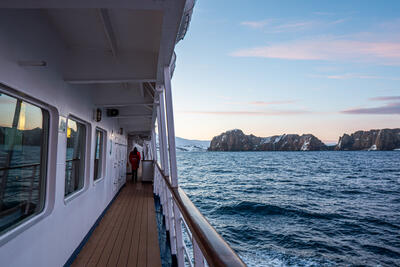
Likewise, the North Sea’s conditions are unable to be predicted for a particular cruise itinerary. You certainly shouldn’t expect to sail through pristine, mirror-like conditions when cruising through the sea, but at the end of the day, cruise lines operating in the Drake Passage and North Sea are experienced. They are committed to keeping passengers safe, whether that means shifting an itinerary or delaying a departure.
Although the Drake Passage and the North Sea are notorious for being treacherous, the possibility of rough seas should not stop you from sailing to these untouched, breathtaking regions of the world.
Sometimes it really is all about the journey rather than the destination. Maintaining a positive mindset while crossing these waters will help ensure your cruise is successful regardless of the sea conditions at hand.


